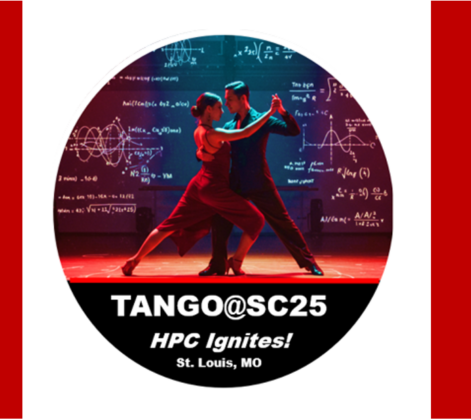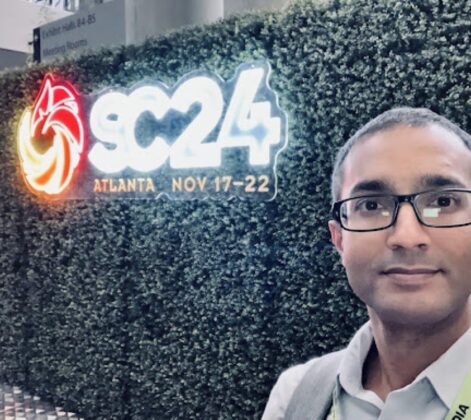Featured in HPCwire on June 13, 2018
Xiaoxiang Zhu (朱晓香) who works for the German Aerospace Center (DLR) and Technical University of Munich (TUM), was awarded the 2018 PRACE Ada Lovelace Award for HPC for her outstanding contributions in the field of high performance computing (HPC) in Europe.
Dr. Zhu is a professor of Signal Processing in Earth Observation (SiPEO) at TUM and head of the Department EO Data Science at the DLR Remote Sensing Technology Institute.
This was the third year that the Partnership for Advanced Computing in Europe (PRACE) issuedthe Lovelace Award, and it was presented to Zhu on May 28 during the PRACEdays18 conference in Ljubljana, Slovenia, by Sinéad Ryan who chairs the PRACE Scientific Steering Committee.
I caught up with Dr. Zhu in Ljubljana, and she agreed to this interview.
Dr. Zhu, EO research is important to many disciplines, but it is complex and I imagine few understand how it is applied. How would you describe it to a layperson?
“Urbanization is one of the most important megatrends of global change. Currently 55 percent of the world’s population lives in urban communities, and that percentage is ticking upward; in 1950, 30 percent lived in cities, but by 2050 it is expected that 68 percent will live in urban areas. By 2030, it is expected that 10 million will live in 43 megacities in developing regions. Some fear that if we don’t plan for growth in these regions, there could be mass famine, pandemics and social unrest.
“The United Nations has established goals for sustainable cities and communities, but in the developing countries where these megacities are expected to grow, the data we need to prepare simply aren’t available. While one in three city dwellers currently live in a slum, we have little information about informal settlements that tend to grow organically, and without a plan.Many births in these settlements are never recorded, which makes it impossible to plan for the children’s future.
“To close the data gap, my team is using satellite-based EO technologies to explore the semantic mapping of cities and their dynamics on a global scale.The five-year goal for my team is to generate the first ever global 3D urban models and their changes over time; which adds a fourth dimension. Along with semantics, 4D will allow us to estimate population density at any given time, which will help us scale the needed infrastructure and more effectively allocate finite public and private (foundation) funds to address the most urgent fundamental human needs, such as nutrition, health care, clean water and education.”
I see that you published your first paper in 2009, and your work has beencited 2,347 times according to Google Scholar; one of your earliest papers has been cited 301 times! Was that your favorite paper or accomplishment to date? The paper is: Zhu, X., Bamler, R., 2010. Tomographic SAR Inversion by L1-Norm Regularization — The Compressive Sensing Approach. IEEE Transactions on Geoscience and Remote Sensing 48(10), 3839-3846.
“That’s a tough call! I love many of our papers, but I guess that one is my favorite since it convinced me early-on that I can make a difference with science, and it continues to motivate me today. It was the first time compressive sensing was exploited to improve the resolution of radar tomography up to 15 times. This made it possible to reconstruct dynamic city models with an unprecedented granularity of 1 million points per km^2 and with a time-stamp accuracy of better than mm/year, which allows us to monitor (and model) a more sophisticated, large scale urban infrastructure from space. For this work, I was awarded the Technology Review Germany “Innovators under 35,” and several other research awards.”
Who or what influenced you to pursue signal processing in EO science,and at what age?
“My father is a teacher, and when I was a little girl, he would show me photos of earth that were taken from outer space. Since then, I have been fascinated with space. I was also interested in mathematically–demanding tasks from a very early age; as a schoolgirl, I took part in mathematics competitions. On the other hand, I want to make a difference with my research, preferably with an interdisciplinary team. So what I am doing today is no coincidence: The use of satellite technology for EO perfectly combines my passion for space and mathematical aptitude.”
EO sounds computationally-intensive, and complex. Could we automate processes so that researchers from a variety of domains could access and utilize the important data you mention without having to master the computational tasks?
“I do not believe the European Commission supports a Center of Excellence (CoE) for EO, but I think one would be useful. As you have observed, EO uses petabytes of data, addresses a large number of global problems, and requires mastery of and synergy among many hardware types, including CPU, GPU, and high data I/O. Due to this complexity, researchers from less computationally-intensive fields, or “long-tail disciplines,” may be intimidated by the prospect. But with a CoE,they would overcome such fear. Perhaps an online platform could be built that people from a range of disciplines would be comfortable using. If it functioned from the desktop with a common browser, it would allow them to select a region of interest with the click of a mouse, and then a particular task. For example, they may want to generate a cloud-free mosaic of their country. All of the complicated tasks and compute-intensive processes—data I/O, job submission, computation, and visualization—could be handled on the back-end, and the results could be delivered to their desktop in seconds, or minutes. This capacity would significantly boost scientific discovery in EO across disciplines towards a better understanding of our planet.”
You have worked in several countries as a guest scientist or visiting professor – Italy, China, Japan, the U.S. and Germany. Is there a common challenge or obstacle that these countries should work to overcome if they hope to accelerate the process of scientific discovery on behalf of humanity?
“While HPC resources are accessible to researchers at universities in these countries, more powerful systems are needed everywhere. The universal bottleneck tends to be a general lack of HPC skills, which is a global problem since, as I represent, the workforce is mobile and spread thin. In the EO field, there are only a small fraction of researchers who are skilled enough to write highly-scalable codes. But it would be costly to train the number of people needed for geoscientific research. Therefore, I believe a CoE mentioned above, plus high-level support teams at HPC centers would be the key to success. Even better, rather than sitting at HPC centers and answering opportunistic questions, experts could work in the field, side-by-side, with interdisciplinary researchers on individual projects. A pool of highly-skilled professionals at HPC centers could be on loan to projects from different disciplines for a certain period of time.”
What could these centers do differently to encourage more girls and women to pursue STEM academics and careers, and what should they do to support them once they’re in the pipeline so they don’t leave?
“Initiating the “PRACE Ada Lovelace Award for HPC” is a great first step. This opportunity has given me a platform from which to share my story that other young women and girls may relate to. But we can do more. More female principal investigators, keynote speakers at technical conferences and senior leadership at major centers of excellence around the world should be a universal goal. When girls have identifiable role models, they can envision themselves succeeding in STEM fields. On the other hand, I have noticed positive change in my career to date, so things do seem to be progressing. Wise leadership understands that women represent half of their nation’s potential, so they deserve every advantage, and as early as possible in the education process. Personally, I am delighted to be an advocate for women in science.”
Where do you see yourself in ten years?
“My goals for the future relate more to the science than to my career. In ten years, I hope we have successfully generated the first ever models that will effectively inform global urban science. If we can help decision-makers in all fields provide a better quality of life for people who live in slums, I will feel an immense sense of accomplishment. I also pin hopes for the future on my students. For me, teaching is one of the most rewarding aspects of my work. I hope the doctoral students and postdocs I have mentored will achieve greatness; their success is my reward.”
What would you tell your ten-year-old self if you had the chance?
Zhu thought for a moment, and smiled, “I would tell her that life is beautiful, and so is science!”

Sinéad Ryan, Chair of the PRACE Scientific Steering Committee (left) and Dr. Zhu at PRACEdays18. Copyright PRACE 2018.
About Augusta Ada King, the Countess of LovelaceAugusta Ada King, Countess of Lovelace (nee Byron: 10 December 1815 – 27 November 1852) was an English mathematician and writer chiefly known for her work on Charles Babbage’s early mechanical general-purpose computer, the Analytical Engine. Her notes on the engine include what is recognized as the first algorithm intended to be carried out by a machine. As a result, she is often regarded as the first computer programmer (source Wikipedia).About PRACE
The Partnership for Advanced Computing in Europe (PRACE) is an international non-profit association with its seat in Brussels. The PRACE Research Infrastructure provides a persistent world-class high performance computing service for scientists and researchers from academia and industry in Europe. The computer systems and their operations accessible through PRACE are provided by 5 PRACE members (BSC representing Spain, CINECA representing Italy, ETH Zurich/CSCS representing Switzerland, GCS representing Germany and GENCI representing France). The Implementation Phase of PRACE receives funding from the EU’s Horizon 2020 Research and Innovation Programme (2014-2020) under grant agreement 730913.
For more information, visit the PRACE website: http://www.prace-ri.eu/
Watch for more news about PRACEdays18 in HPCwire. Meanwhile, mark your calendars for #PRACEdays19 and #EHPCSW19 in Poznan, Poland, May 13-17, 2019.





